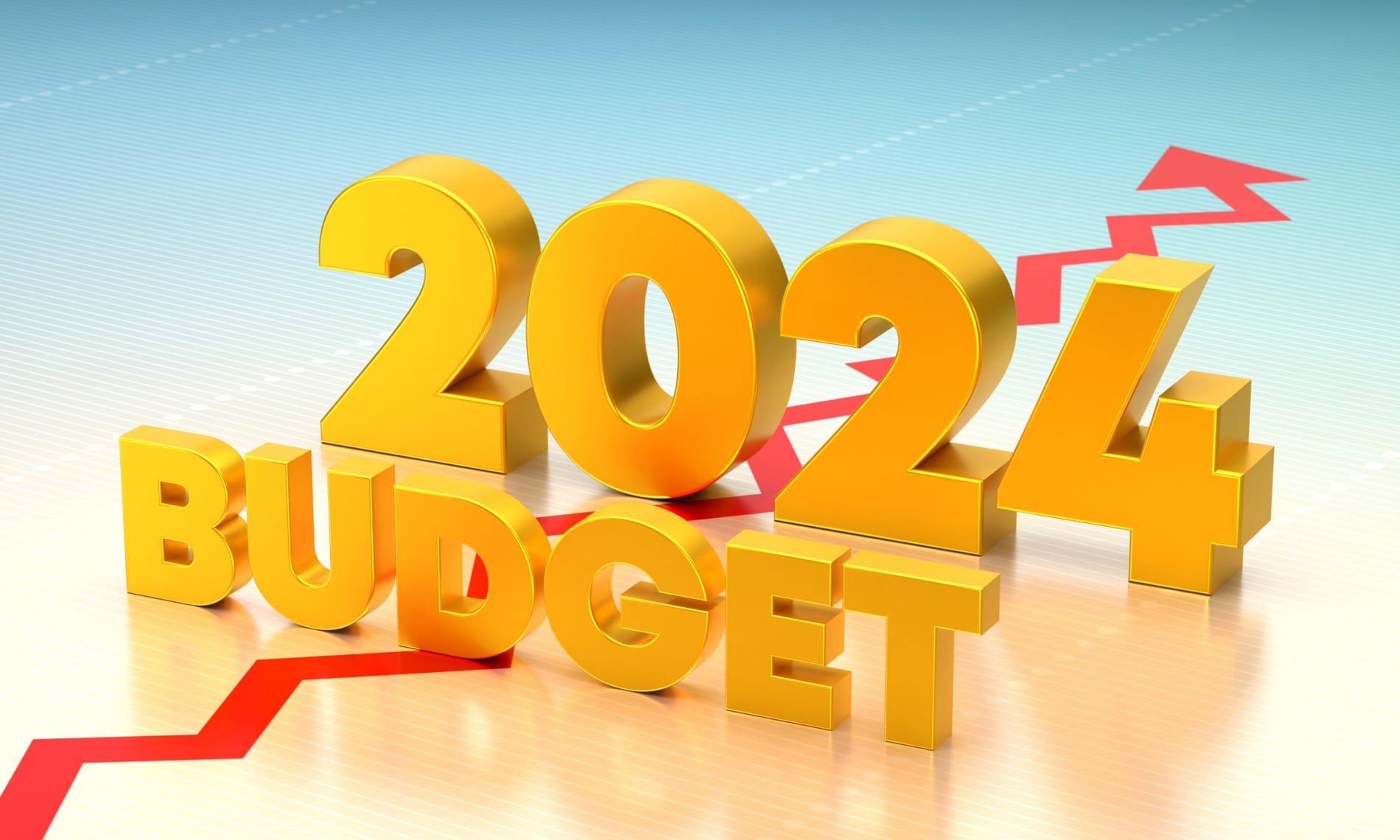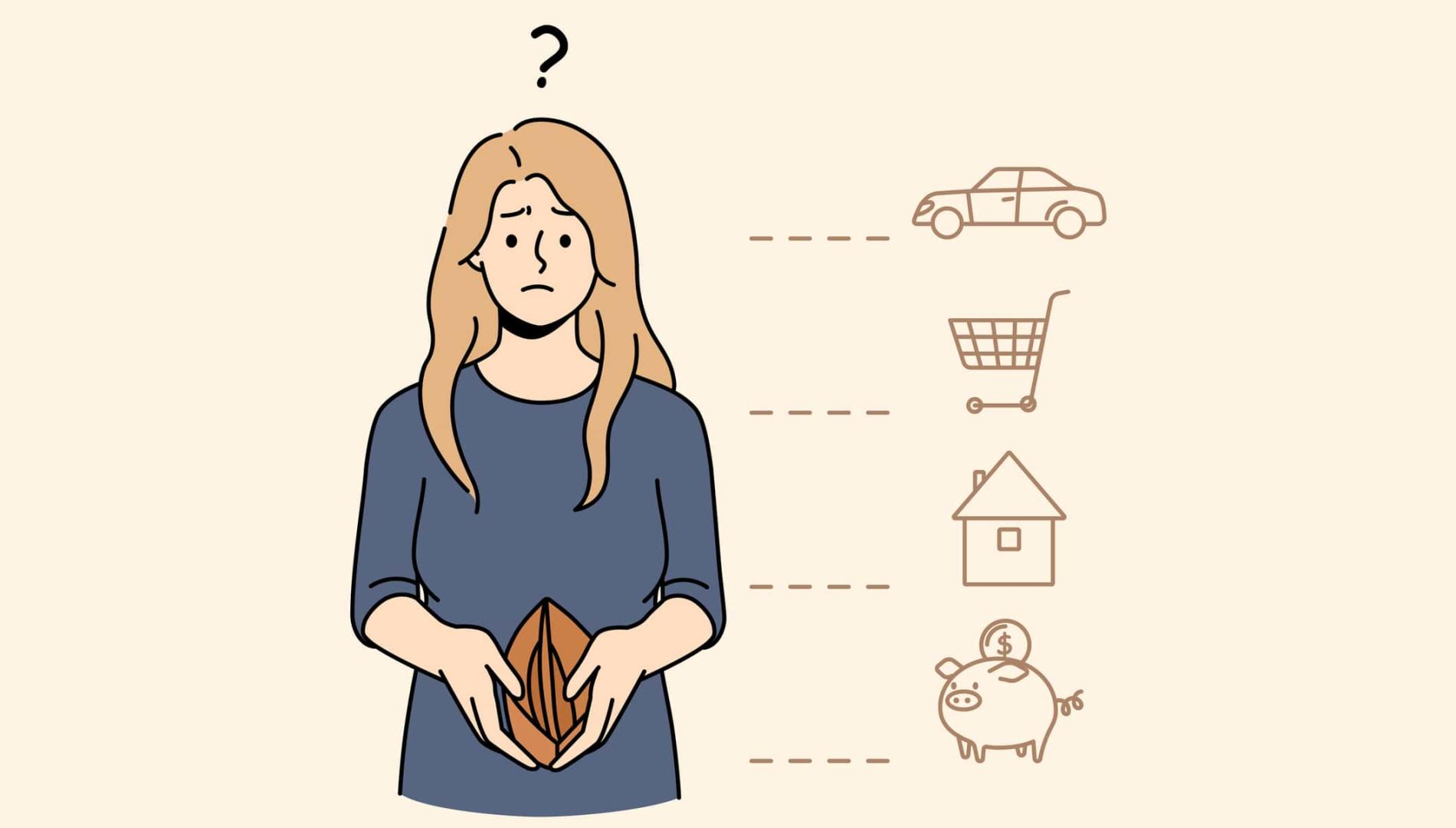Budget 2024 balancing act: Easing cost-of-living, with an eye on inflation
“There are people who have money, and people who are rich,” Coco Chanel was fond of saying.
It’s true – in 2022, Australians became the world's richest people, driven by a combination of property assets and superannuation. But with federal budgets, it’s not how much money you have; it’s how you spend it.
This could be the last budget before the next federal election (although don’t rule out a March budget, which the Coalition initiated in 2022). That means the voter demographics must be targeted carefully, from first-home buyers to university undergraduates.
Ordinarily, the annual budget is merely an accounting exercise in revenue, expenditure, coupled with the odd rabbit out of the hat. But this is no ordinary year. As a veteran ALP insider told me in Sydney late last year:
“If Albo doesn’t address the cost-of-living crisis, he’ll be negotiating a coalition with the Greens on election night 2025.”
Cost-of-living increases, inflation, and energy prices affect everyone. And that matters even more when we’re amid a significant generational shift in voting patterns.
Demography is destiny. Boomer voter numbers are in freefall. The number of rusted-on ALP and LNP voters is in marked decline, as Gen Y and Z approach peak electoral influence.
Unlike their Gen X and Boomer forebears, Millennials and Zs aren’t married to any party. Generation Rent is saddled with debt, and their home ownership prospects in the nation’s capital cities grow further out of reach.
So it’s no surprise the 2024-25 federal budget targets both cost-of-living measures and the youth vote. Power bills will be subsidised to reduce pressure on households, while graduates facing steep HELP fee bills will receive relief backdated to 2023.
That said, Treasurer Jim Chalmers is walking a tightrope – this budget cannot afford big-ticket expenditure items that will drive up inflation. This will only compel the RBA to ratchet-up interest rates, grinding down households even further. That is not a blueprint for the government’s electoral success.
Federal budget 2024: watch Australian treasurer Jim Chalmers' full speech – video https://t.co/RC3nwcs0LH
— Guardian Australia (@GuardianAus) May 14, 2024
This Treasurer’s not for spending
The bottom line is a slender $9.3 billion surplus to rein in inflation – the second surplus in a row – but forward estimates show 10 years of budget deficits ahead. Forecast deficits of $28 billion and $42 billion in 2024-25 and 2025-26, respectively, show the Commonwealth budget is locked into structural deficits.
But that hasn’t stopped Dr Chalmers from allocating $3.5 billion to households and small businesses, in a not-means-tested $300-$325 power bill subsidy rebate. This has provoked most criticism of a budget that appears largely Teflon-coated – wealthy households that don’t need energy subsidies will get one regardless.
Australians will be given $3.5 billion in subsidies to soften the blow from soaring energy bills in a federal budget that pours cash into household and business measures while promising to cut inflation before the next election.https://t.co/OqC6dJyjWi
— The Age (@theage) May 14, 2024
Money talks
“Inflation is as … deadly as a hit man,” said Ronald Reagan, although he was facing 13.5% inflation when he said it. Treasury estimates inflation will fall rapidly to 2.75% by the end of 2024, well below the RBA’s 3.8% forecast.
You can safely ignore Treasury; its forecasts are mostly wrong, and monetary policy decisions are made at RBA HQ in Martin Place, Sydney. Not Canberra.
For the RBA, there are too many “known unknown” variables that could further impact inflation. War in Ukraine and Middle East conflicts have already affected supply chains, energy prices, and shipping and insurance costs. Intensifying or widening conflicts heighten risks.
Too few commentators zero in on the biggest influence on inflation – tight US Federal Reserve monetary policy, and the concomitant rise and rise of the US dollar. Globally, 91% of transactions have the greenback on at least one side, and Australia pays for a plethora of goods and services in US dollars.
That means we “import” inflation, due to the foreign exchange costs of swapping Australian dollars into US dollars.
Economists are likely to quibble with the government's claim its budget is helping, not hindering, the inflation fight, but in the end the RBA's judgment will be what matters.
— ABC News (@abcnews) May 14, 2024
https://t.co/1rgQGNY2aO
Be in no doubt, the RBA will “fight inflation first” via disciplined monetary policy to defend the Australian dollar exchange rate, which would have catastrophic effects if it fell precipitously – say, below US60 or 55 cents.
Consider the imported energy costs for starters. The RBA’s only concern is hitting its 2.0% inflation target. And if that means squeezing Australian households until the pips squeak – well, that’s the cost of defending the Australian dollar.
It’s not easy being green
The Future Made in Australia Act may not yet be a magnet on your fridge, but it soon will be. Carbon copies of Biden administration policy, as we shall see, have become de rigueur in the halls of Parliament House, Canberra. The Made in Australia Act merely parrots Biden’s Inflation Reduction Act of 2022, delivering billions in subsidies to climate action, renewable energy, and green jobs.
Made in Australia is the budget’s centrepiece, designed to make Australia a “renewable energy superpower”, build domestic industrial capacity and, critically, underwrite the transformation from Australia’s two-spoke economy (carbon resources and selling houses to each other) to an economy that’s innovative and in lock-step with a clean energy future.
By around 2040-2050, fossil fuel resources, such as gas, crude oil and thermal coal will be “stranded assets”, with declining global demand, as consumers and businesses transition from internal combustion engines and coal-fired power plants, while EVs and solar and other renewable technologies achieve critical mass.
The 2024-25 budget directs $13.7 billion in tax incentives to sectors such as green:
- hydrogen
- critical minerals
- quantum computing
- green metals (nickel, cobalt, copper, zinc).
This is in addition to the $15 billion National Reconstruction Fund, which targets funding at resuscitating Australia’s manufacturing capabilities and rebuilding a sovereign industrial capacity, which was decidedly AWOL during the COVID-19 pandemic.
The reason that this budget – and future federal budgets – will invest so much in Made in Australia is because Canberra has been glacially slow in making this shift.
The bottom line is clear. Countries that fail to transition to clean-energy economies will miss out on the massive growth in green jobs – the goods and services jobs that will drive the transformation.
These will provide the 21st-century workforce with high-income jobs that do not rely upon Australia shipping fossil fuels globally, the source of much of Australia’s teeming wealth for the past 25 years.
Worth reading @MazzucatoM’s piece on a Future Made in Australia.
— David Pocock (@DavidPocock) May 13, 2024
Huge opp to invest in our future while dealing with the biggest challenges we face.
Govt needs courage to ensure we attach conditions to support + use Govt procurement to back 🇦🇺 businesseshttps://t.co/kYS8f9z4qp
Made in Australia is also designed to channel domestic and foreign direct investment into renewable energy projects and away from carbons, to incentivise investors, from superannuation firms, to private equity, to foreign pension funds, to inject capital into sectors such as critical minerals, manufacturing and professional services.
The Singapore-Australia Green Economy Agreement (2022) already promotes decarbonisation, low emissions, sustainable finance and green investment, which are increasingly integrated into Australia and Singapore’s bilateral trade.
Would you like peanuts with that?
The revamped stage three tax cuts aren’t a particularly clever conjuring trick. Certainly, taking half of the cut away from $180,000-plus earners is smart Robin Hood politics. But don’t be fooled – for higher earners, the Treasurer lowered income thresholds, while retaining the top marginal tax brackets at 45% and 37%. This means incomes over $135,000 will continue to pay 37 cents in the dollar, instead of the 30% promised by the previous LNP government.
The average – not the median, mind – tax cut will see workers receive $1888 per annum, or $36 per week. A worker on $100,000 will receive about $41 per week extra under the revised stage three, or $5.90 a day. Hold my smashed avo. Permanently.
That said, lower and middle-income earners ($45,000-$135,000) will pay 30% tax. The magic lies in the detail. Taxpayers will pay 30-37% all the way from $45,000-$190,000 (the majority of our working lives, probably) instead of 30% from $45,000-$200,000, in line with the original stage three cuts. Hey-presto, a bucket-load more revenue for Treasury – for decades to come.
May the course be with you
As Australia is apparently connected to the internet, it’s not hard to see where Generation Y and Z are looking – at America, where the Biden administration, acutely conscious of the decisive role young voters play, is furiously forgiving student college loans before the 5 November election. Biden has forgiven $US136 billion so far. Canberra, as ever, looks to Washington when it seeks originality.
As fee HELP is indexed, soaring inflation hit graduates’ debt levels hard in 2023. Consequently, Albanese and Chalmers have targeted HECS-HELP relief to make a direct pitch to Millennials and Gen Z, now the largest voting bloc in the country.
Almost 30% of Millennials gave their first preference to the Greens in the 2022 federal election, equalling the LNP first-preference Gen Y vote. Preferences helped the ALP over the line, but these don’t mitigate the fact the ALP is haemorrhaging votes to the Greens.
Consequently, the retrospective HELP reforms – which have removed the bump in fee indexation caused by ballooning inflation in 2023 – will reduce fees by about $1600 on the average HELP debt of $26,000. Don’t spend it all at once.
However, essential workers, such as nurses and midwives, will also receive subsidies for their placements, which are obligatory elements of their degree courses. Moreover, this budget establishes a target of eight out of 10 workers to have a tertiary qualification – including vocational education and training – by 2050, and $350 million will also be invested in 2024-25 in fee-free university courses.
The best things in life are free. The second-best are very expensive.
So, to return to Coco, perhaps some Chanel for you? No. 5? Or Pour la Nuit? There’s something for every generation.
Go on – treat yourself. With $300 off your power bill, you can afford to. Regret nothing.





